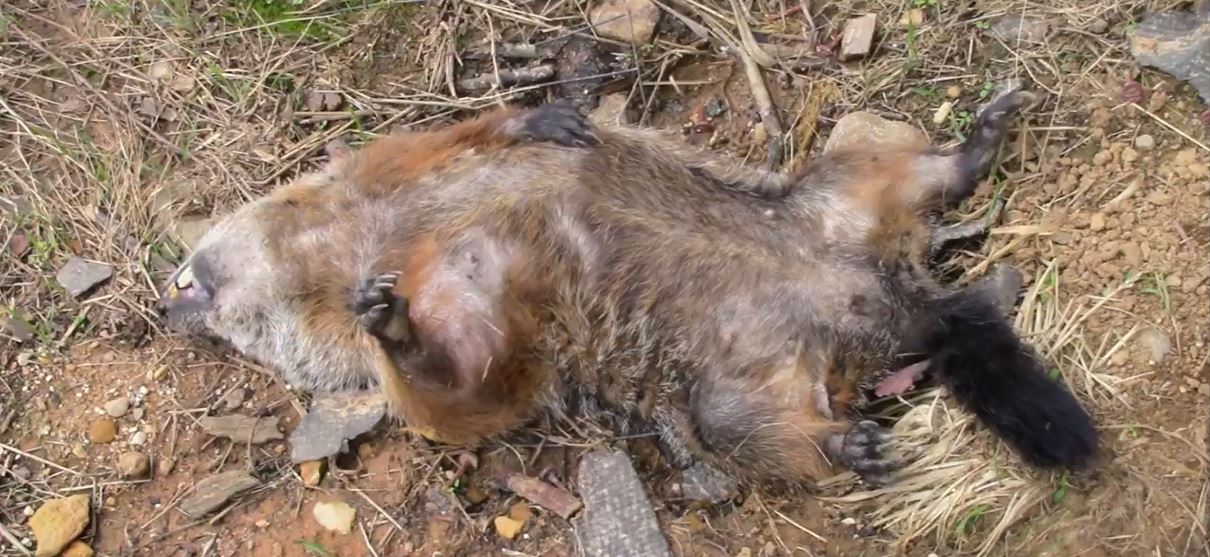Groundhog Trapping: How To Trap A Groundhog

Groundhogs, also known as woodchucks, can cause a number of issues on your property. They may make large burrows in which they uproot a significant amount of dirt and in some cases, their digging may even lead to the collapse of concrete. They also tend to eat items in your garden as well as other plants and trees naturally growing on your property. The most effective method of getting rid of a groundhog for good is to trap and relocate the animal. You can hire a professional to do the job for you to increase your chances of successfully trapping the groundhog while reducing the risk of injury. If you feel confident, on the other hand, you can trap a groundhog by keeping the following information in mind.
Legalities
Before you begin planning how to trap a groundhog wreaking havoc on your property, take the time to look into local regulations. Depending on where you live, it may be illegal to use certain types of traps or trap the animal at all. There may also be restrictions on where you can relocate the woodchuck or whether you can do so at all.
Trap Types
There are two main types of traps available for groundhogs. If you want to kill the animal, you could theoretically use a body-grip trap which you would mount directly above the entrance to their den. These traps are spring-loaded and snap shut on the animal's body. It will work to catch and kill the animal, but poses numerous risks. One of these is the ability to accidentally trap another animal, such as your family pet or a neighborhood cat. Additionally, this type of trap is illegal in a large number of states and leaves you to deal with disposing of the carcass.
Live traps are the ideal method of trapping a groundhog. These cages will not always be effective, but when baited and placed properly they will get the job done more often than not. For the best results, you will want to put the trap right in the groundhog's path and pick the right bait.
Most people, including professionals, prefer to use live cage traps for groundhogs. This is the easiest and cleanest method of trapping the animal. You will most commonly find a one-door cage trap which is triggered when the woodchuck steps inside the trap. This causes the door to close right behind it. To catch a groundhog, you should pick a cage trap that is about a foot tall and two and a half feet long.
Best Baits
Using the wrong bait may mean that you won't be able to catch a groundhog or you may even end up catching a completely different animal by accident. You can find a store-bought groundhog bait, but it is frequently easier and cheaper to just use items you have at home. Corn, peanut butter, sunflower seeds, and cantaloupe will all work. You can use nearly any fresh vegetable you have on hand; other specific options include peas, green beans, lettuce, vanilla extract, strawberries, and peaches. When setting up the bait, you want to put a bit outside of the trap to get the groundhog's attention and then place more inside so the animal enters the trap and triggers the mechanism.
Placing The Trap
When setting up the groundhog trap, location is one of the biggest factors in whether you will be successful. Aim to place the trap close to the animal's burrow or the part of your garden where it typically enters. The ideal would be to look for displaced soil as this will indicate the main entrance to the groundhog's burrow. Place the trap right by the entrance and you will be on your way to success. Your trap should not be more than five or ten feet from the entrance. If you want to increase your chances, you can even place guide logs to help funnel the groundhog so it enters the trap. An alternative is to conceal the trap using vegetation or canvas.
Relocating Or Disposing Of The Groundhog
As with any wild animal, you never want to touch the groundhog directly due to the risk of disease, scratches, or bites. If you used a lethal trap, you will want to check local regulations before throwing out the carcass. Make sure that you can legally dispose of it with your regular garbage or find out where to do so and always double bag the animal.
If you used a live trap, then you should start by putting a blanket on top of the trap. This helps calm down the groundhog. Once again, check to see whether there are local regulations or restrictions on where you can relocate the animal. You may have to bring the groundhog to a specific authorized location. In other cases, you can relocate it wherever you want. If you get to choose the location, bring the groundhog a minimum of 10 miles from your home.
Read the How to get rid of groundhogs page for helpful information and to learn more about Groundhog Trapping: How To Trap A Groundhog

